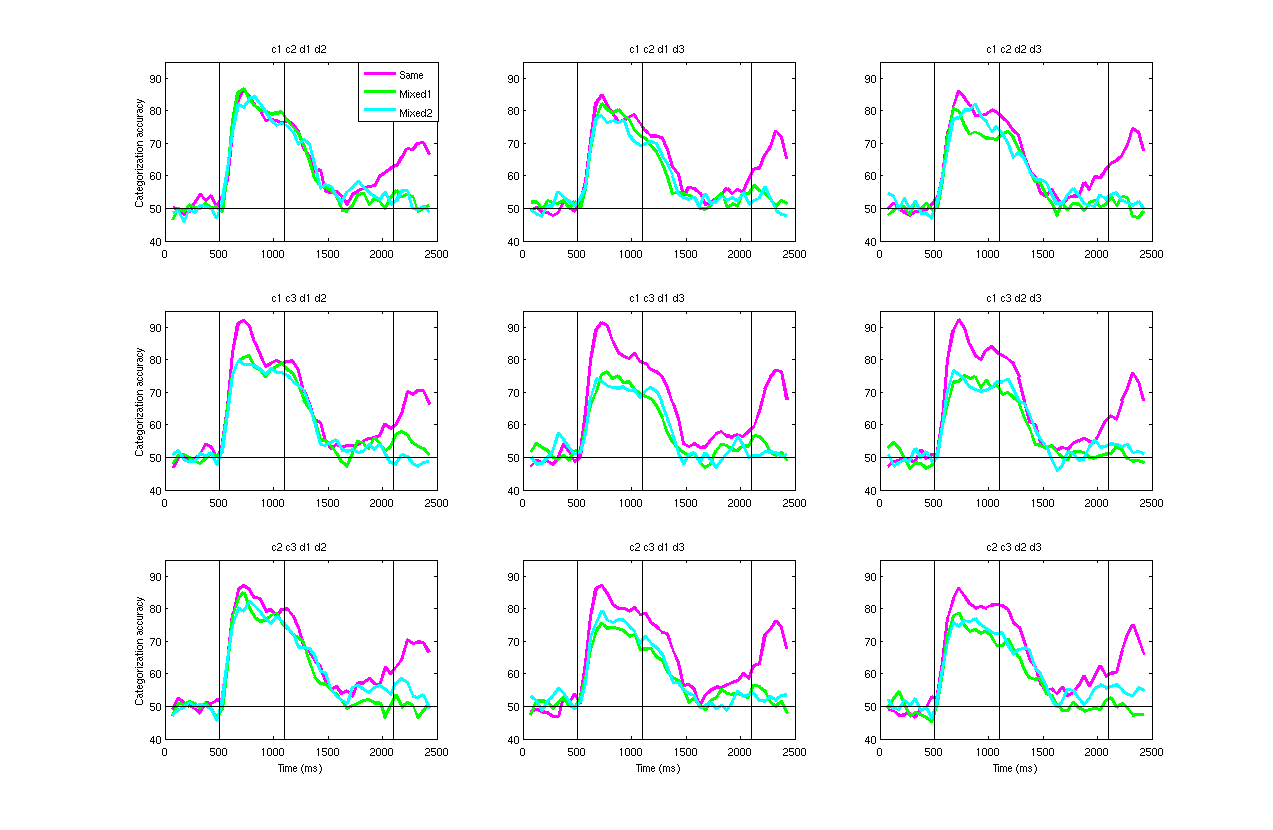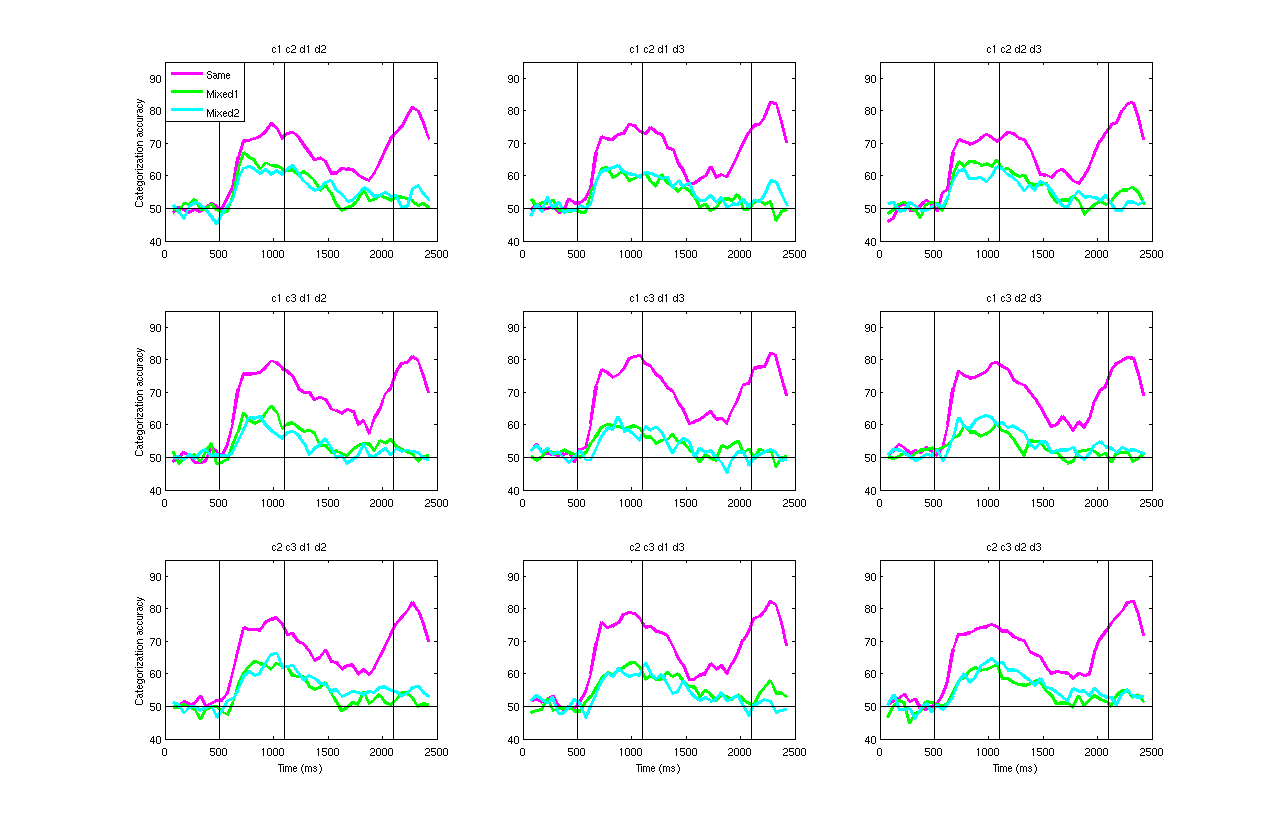An alternative 'abstract' category readout: within
category minus mixed category accuracy
In order to further evaluate whether there is any 'abstract' category
information that is possibly separate from visual properties of the
stimulus, we designed an analysis in which we trained and tested a
classifier using two dog and two cat prototypes, and compared
the results from the within category readout (e.g., [c1 c2] vs. [d1
d2]), to the decoding accuracies obtained in the two 'mixed'
category readout conditions (e.g., [c1 d1] vs. [d1 d2], and [c1
d2] vs. [c2 d1]). Results from all of the 9 permutations comparing the
same vs. the two mixed conditions for ITC
and PFC are shown
below.
For PFC, in all 9 permutations, the within category accuracy
is much higher, while in ITC the within category information is either
higher or equivalent to the mixed category accuracies when the stimulus
is visual, and the within category accuracy is always higher in the
response period. Given the large amount of visual information
in ITC, it is not surprising that for some of the conditions while the visual stimulus is being
shown, the within category accuracy is
equivalent to the mixed category information because for certain
prototypes the stimuli in the opposite category are probably more
visual similar than the stimuli within the category. However the fact
that within category accuracy is never lower than the mixed category
information is likely a result of additional
'abstract' category information contained in the firing rates of these neurons. For ITC
during the delay period (and PFC at all time points), visual
information is not present in these areas, and thus only the
influence of 'abstract' category information is seen in the decoding
accuracies.
We have also created an image that summarizes the
amount of 'abstract' category information in these areas using the
above measure. To do this we took each of the 9
permutations of the within category decoding accuracies and
subtracted from them the average of the two mixed category decoding
accuracies. We then averaged over these 9 permutation and
plotting the mean and standard deviation from this averaging.
The results are also shown below, and examining them we see that
initially ITC has about the same amount (or possibly slightly less)
abstract category information as PFC, however later in the trial PFC
has more abstract information than ITC, which largely confirms the
results shown in Fig. 3A of the paper.
ITC results
comparing within category accuracy vs. mixed category for the 9
permutations of the prototypes

PFC results
comparing within category accuracy vs. mixed category for the 9
permutations of the prototypes

Average
of within category accuracy minus the mixed category decoding
accuracies

Home


